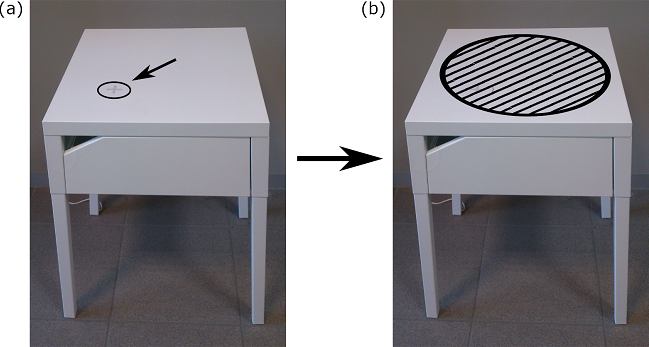About - Publications - Blog
A homogeneous magnetic field for inductive wireless power transfer
Summary
We propose an algorithm for realizing a homogeneous magnetic field. The algorithm designs a coil with a fixed inductance.
References
Ben Minnaert, Lieven De Strycker and Nobby Stevens. Design of a Planar,
Concentric Coil for the Generation of a Homogeneous Vertical Magnetic
Field Distribution. Applied Computational Electromagnetics Society Journal,
32 (12), (2017) 1056-1063.
Paper: [pdf]
Ben Minnaert and Nobby Stevens. An improved algorithm for the creation
of homogeneous magnetic field distributions.Electromagnetics in Advanced
Applications (ICEAA), 2015 International Conference on. Turin, Italy,
7-11 Sept. 2015 (pp. 517-520).
Paper: [pdf]
Algorithm for the creation of a homogeneous magnetic field
In this work, we focus on changing the number of turns and the dimensions of the transmitter coil for inductive applications to realize a more homogeneous magnetic field. This is advantageous for non-static inductive wireless power transfer applications where lateral position variation is a prerequisite: it allows for a more stable power transfer at lateral displacements of the receiver coil.
An example application is given in Fig. 1. It shows the bedside table Selje from the furniture shop IKEA. It allows for wireless charging with the Qi protocol: a user can put any Qi-supported device (e.g., a suitable smartphone) on the wireless transmitter module, indicated by the circle and arrow on Fig. 1a. A visible cross on the surface of the bedside table indicates where the user has to position his device to charge it. A deviation of only a few cm of the receiver to the transmitter coil would halt the power transfer. As a consequence, some users are experiencing that their smartphone is not charged in the morning, because -being a bit sleepy when crawling into bed- they did not position their device exactly at the cross.

Figure 1: The bedside table Selje from IKEA. (a) The circle and arrow indicate the position of the wireless charger module. The receiver has to be positioned exactly at the transmitter to allow wireless charging. (b) A better user experience would be achieved if the beside table would enable a receiver to charge anywhere in the shaded area. In this configuration, a homogeneous field is beneficial for the wireless power transfer efficiency.
A better user experience would be attained if the device would be charged almost anywhere on the surface of the bedside table, e.g., anywhere in the shaded area of Fig. 1b. This can be achieved by creating a larger coil that generates a homogeneous vertical magnetic field distribution. We developed an algorithm to design such a planar, concentric coil, with a target self inductance. The first step in the algorithm is the random generation of a large set of concentric coils. At this step, boundary conditions are the radius of the wire and the outer dimensions of the transmitter coil. In a second step, the optimal coils are selected. This selection process does not only take into account the uniformity of the vertical magnetic field, but also the obtained self inductance of the transmitter coil.
The latter highlights the novelty of our developed algorithm: it starts form a certain value for the self inductance. In this way, the optimized coil, which is the end result of the algorithm, can replace an existing coil in the circuit without significantly impacting the operation of the device, while still obtaining a more homogeneous field. This allows for the transformation of an existing inductive system to a more non-static application where lateral displacements of the receiver are more common.
A significant advantage of the algorithm is the use of closed expressions for the field distribution and self inductance. These closed expressions allow for the rapid evaluation of a very large set of random generated transmitter coils. By applying the algorithm to a representative example, we obtained a quasi-uniform field distribution of the selected transmitter coil. We confirmed this field distribution by experimental verification.
Improvement of an algorithm for a homogeneous magnetic field
We also proposed an improvement on an existing algorithm to calculate the distribution of the current traces of a planar transmitter coil to generate a more homogeneous vertical magnetic field. The original algorithm already gave excellent results, but unfortunately, it is limited to about ten current traces due to instabilities inherently connected to the algorithm.
Our improved numerical procedure consists of using the so called generalized minimal residual method. It eliminates the restriction on the number of traces. As a result, it allows for a more precise description of the desired current distribution, a prerequisite for the generation of a more homogeneous vertical magnetic field. Moreover, even for many current traces, our improved algorithm shows no instabilities at low heights. And also at higher heights, the application of the generalized minimal residual method leads to better results.